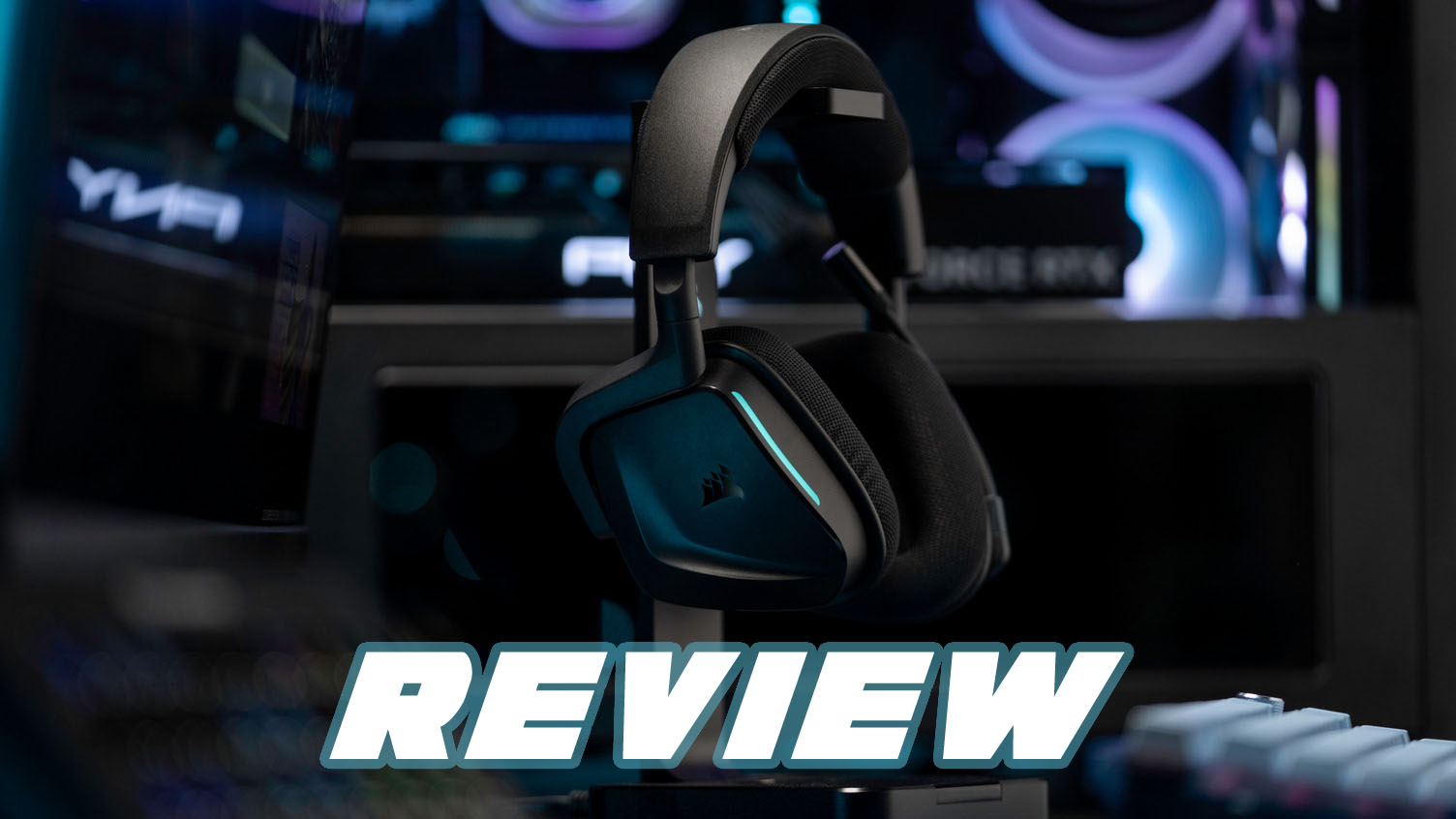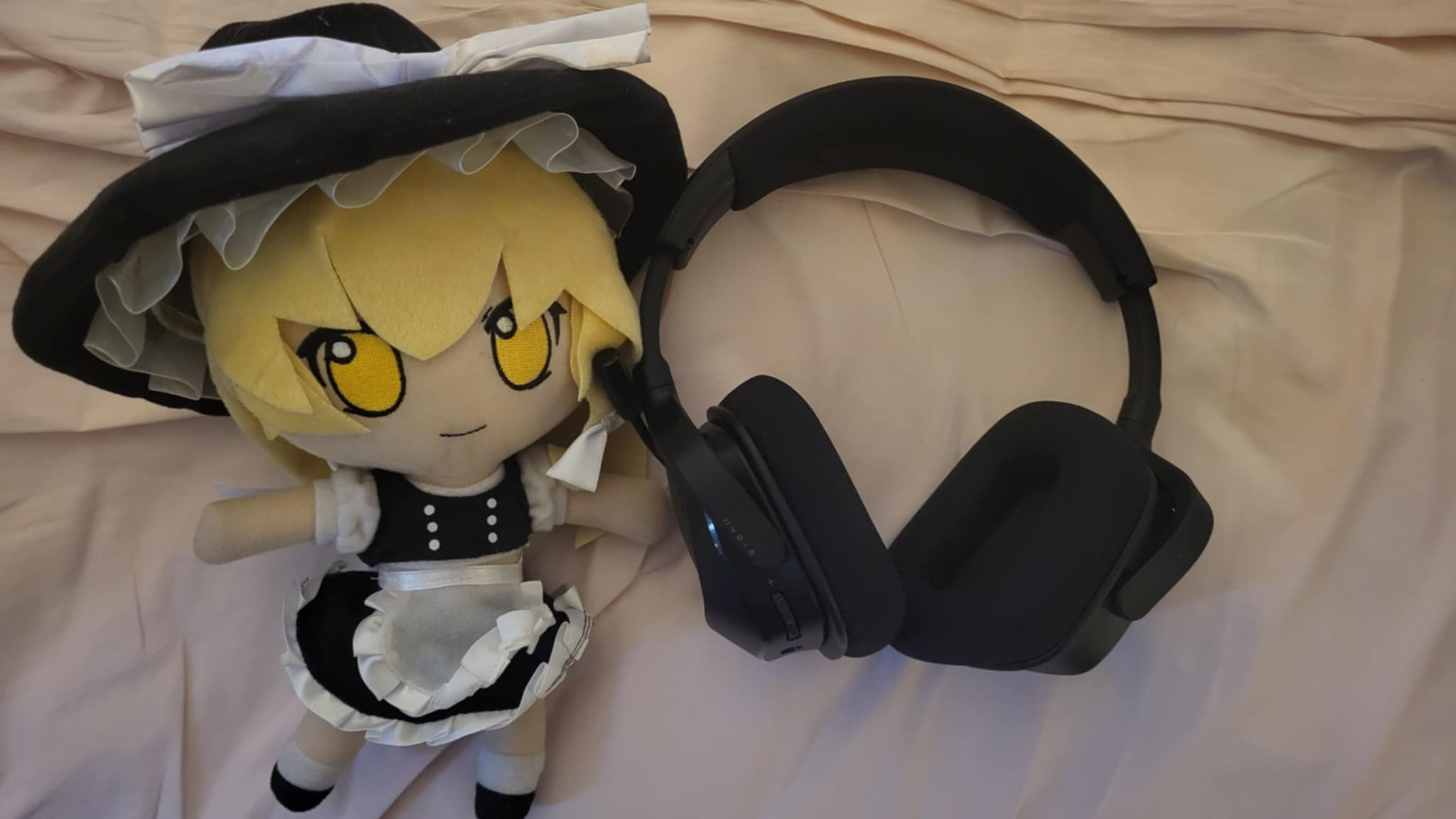
I’m a wired peripherals kind of guy, so I was skeptical when I was sent the Corsair Void Wireless V2 headset for review. Would I have to charge it every hour? Would I miss the feeling of the cord on my arm as it snakes to my computer? Or am I just an old fart resistant to change?
The Void V2 is meant to be a direct improvement of Corsair’s existing Void headset and comes complete with a host of new features and upgrades.
Void Wireless V2 Headset
Manufacturer: Corsair
Price: $119.99
The first thing I noticed when opening up the headset is just how lightweight it is. This thing is mostly plastic, but the sturdy kind of plastic that has that slightly fuzzy texturing on it, and I’m sure that’s intentional. With a microphone and headphones in one, you don’t want to be weighed down by heavier materials.
The ear cups are a bit snug, the band of the headphones is strong so they cups fit tightly over the ear and create a noise-cancelling seal. This is probably what I struggled with the most, noise-cancelling is great if you have a lifestyle that allows you to basically cut off the outside world when you game (would that we could all be so lucky). So while I will say that it works great at blocking out outside noise, potential buyers with kids, dogs, or dependent family members might not be a good fit for these.
You can check out the size of the Corsair Void V2 yourself below (Marisa fumo for scale).

As someone skeptical of wireless peripherals, I was thrilled at the Void V2’s lengthy battery life. I decided to test it with my “casual” use (about 4-12 hours a day) and it took approximately 5 days for me to get the low battery warning. So long as you remember to charge it every other night or so when you go to bed, you’ll never be left out to dry.
In fact, the biggest issue I had was its power saving feature of shutting down when it didn’t detect any output. Sometimes when I’m working (like on this review) I’ll spend quite some time typing and focusing. I’m not a great multi-tasker so even listening to music is a bit of a distraction. So sometimes I’ll get jumpscared by the little musical sting that plays when the headset powers down. It’s not a -big- issue, but something I want to point out.
So far, my biggest concern has been the microphone. I’m used to use a stand alone microphone, so I was expecting some compromise using one attached to a headset. There’s extra echoes and vibrations to consider, and the proximity to your headset increases the potential for feedback. Luckily while I didn’t get any feedback from the output, there was a small drop in sound quality compared to the standalone mic I normally use.
I did later end up having some trouble getting the mic to turn on. The headset microphone is supposed to automatically turn off and on depending on if its raised up or folded out. But sometimes I was getting no response, or I would just get an uncharacteristic beep. This problem was solved by making sure iCUE was up to date. So really make sure you’re keeping your software and drivers up to date, especially for “dummy-proof” technology like this.

One of the best things about the headset is if you’re already using Corsair peripherals (I’m using the Corsair Strafe MK.2 mechanical keyboard), then you can control most everything through Corsair’s proprietary iCUE software.
Ultimately, the Void Wireless V2 headset is comfortable, sounds great, and has such a long battery life that the “drawback” of being wireless is completely negligible. I’ve been a wired peripheral purist even as Bluetooth gets more and more popular, but if everything was as convenient as this headset is… I’ll at least consider a wireless mouse.
The Void Wireless V2 headset used in our review was provided by Corsair. You can find additional information about Niche Gamer’s review/ethics policy here.